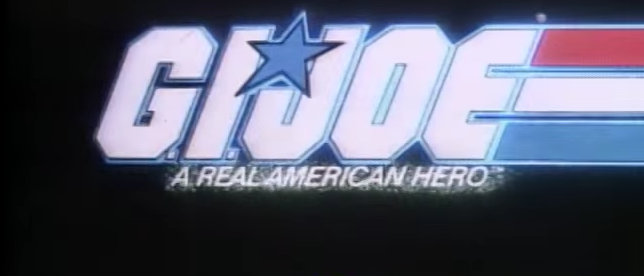Why Knowing is Half the Battle

Atop every Now I Know email, since the first one back in the summer of 2010, is a logo with the tagline “That’s Half the Battle.” If you don’t know why that tagline is there, you need to know what G.I. Joe is and then travel back to the mid-1980s or, absent a time machine, to YouTube.
G.I. Joe is a line of action figure toys dating back to the mid-1960s, although it really became popular about twenty years later. Good guys like Duke and Snake-Eyes took on the bad guys — Cobra, led by Cobra Commander — in toy form, like the ones seen here. The toy’s popularity warranted more investment, and in 1983 and 1984, Hasbro — the toy company that owned the G.I. Joe license — hired a production company to make two five-episode cartoon miniseries featuring the heroes and villains. Those miniseries begat a larger foray into television; over the next two years, G.I. Joe’s characters would grace our screens in the form of 95 more 30-minute episodes.
The 30-second clip above comes from one of those episodes. If you didn’t watch it, here’s the gist: a kid does something kind of dumb and dangerous, resulting in a problem; one of the G.I. Joe heroes shows up in time to fix the issue, and then the kid (or kids) and the Joe have a conversation. The Joe dispenses some sage advice — in this case, “remember, never tell anyone you’re home alone, and never give anyone your address.” (The last part of that advice is questionable; if you’re calling 911, for example, telling them where you are is important.) The kid, thankful for the advice, says “now I know!” — a familiar phrase for other reasons to anyone reading this, I hope — and the Joe replies, “and knowing is half the battle!”
So, that’s why Now I Know’s tagline is “That’s Half the Battle.” Great!
But why did the G.I. Joe cartoons have these public service announcements (PSAs) in the first place? That’s a more complicated question.
The producers of the show may have been nice people, but giving up thirty seconds of their run time wasn’t something done out of the goodness of their hearts. There were two huge and obvious problems with the TV show, after all. First off, the show was arguably a commercial for the toy, just one that was masquerading as content. And second, even if you bought the idea that the show was entertainment in its own right (and not likely to induce a purchase), it was still a show directed at adolescents which makes war look like a lot of fun. In an era where the entertainment choices available to children were under a microscope (see the PMRC, for example), the G.I. Joe show seemed like an easy target.
The Joe team knew that, though, so they got proactive — the PSAs were there to combat critics.which would certainly come out of the woodwork otherwise. Mental Floss explains:
In order to show that the cartoon was not just a half-hour commercial for the toys, but was actually educational, Sunbow [the production company] added a small public service announcement at the end of every episode to teach kids some sort of lesson. Overseen by Dr. Robert Selman, a professor at Harvard’s School of Education and Human Development, each PSA typically featured a member of the Joe team meeting a couple of kids and lending a helping hand or words of encouragement.
In total, Sunbow produced thirty-five different PSAs over a wide variety of topics, ranging from messages of tolerance (e.g. “being a handicap doesn’t make one helpless” — pardon the language of 1985) to oddly specific health and safety messages (e.g. “how to stop a nosebleed”). Further, Sunbow vetted the PSAs through the National Child Safety Council, a non-profit which, per its website, is “dedicated to the safety of children” and touts its on-going partnership with law enforcement agencies. (The NCSC is also the organization which worked with milk manufacturers to put photos and information about lost and missing children on milk cartons.) And Sunbow made this partnership clear; as seen here, each PSA (and therefore, each G.I. Joe episode) closed with the Joe logo and the line “endorsed by the National Child Safety Council.”
How effective the PSAs were at imparting lessons to those adolescents who viewed them, that we don’t know. But the PSAs were effective in another way — the G.I. Joe series managed to avoid controversy over the show’s appropriateness, and remained on air for two years.
Bonus fact: So, how do you stop a nosebleed? According to WebMD, you should “sit up straight and tip your head slightly forward ” and then “use your thumb and forefinger to firmly pinch the soft part of your nose shut .” And whatever you do, don’t lean back — that’s bad advice which, also per WebMD, “may cause blood to run down the back of your throat,” and, in turn, irritate your stomach and make you throw up (which could lead to more bleeding, too). If you paid attention during G.I. Joe, though, you already knew that — their nosebleed PSA got it right.
From the Archives: The Sword Isn’t So Mighty After All: Why 80s cartoon He-Man had a sword he couldn’t use.
Not Related: All 95 episodes of G.I. Joe, the cartoon series.
